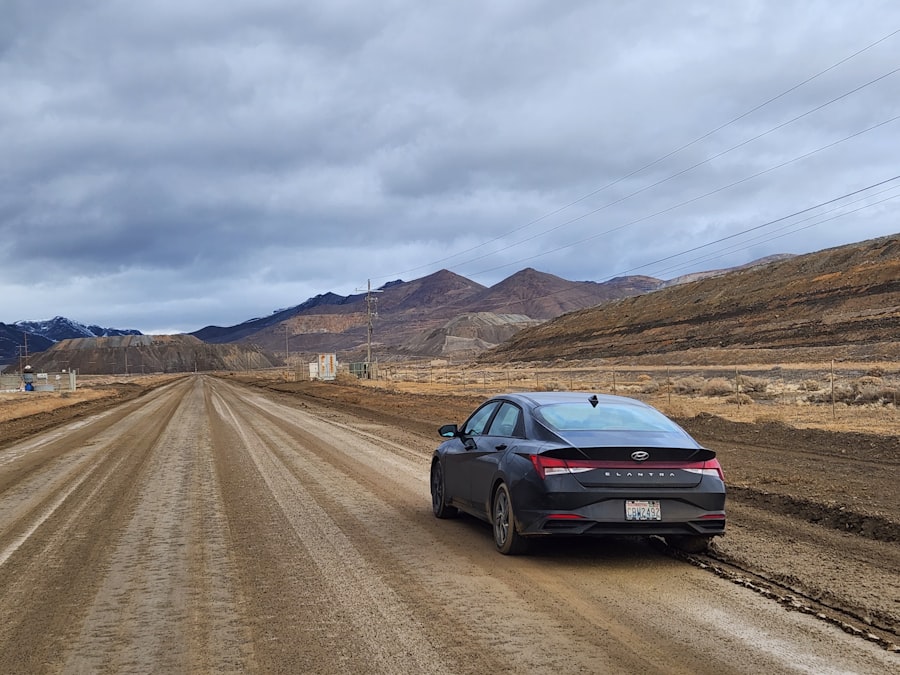When you decide to drive in Nevada, understanding the requirements for obtaining a driver’s license is your first step. The state has specific criteria that you must meet, which include age, residency, and identification requirements. To apply for a driver’s license in Nevada, you must be at least 16 years old.
If you are under 18, you will need to complete a driver’s education course and hold a learner’s permit for at least six months before you can take the driving test. This ensures that you have adequate practice and knowledge of the rules of the road. In addition to age requirements, you must also provide proof of residency in Nevada.
This can be accomplished through various documents, such as utility bills, bank statements, or rental agreements that display your name and address. Furthermore, you will need to present valid identification, which may include a birth certificate or passport. Understanding these requirements ahead of time can save you from unnecessary delays and ensure that you are well-prepared when you visit the DMV.
Key Takeaways
- Understanding the Nevada Driver’s License Requirements
- Nevada residents must be at least 16 years old to apply for a driver’s license.
- Applicants under 18 must complete a driver’s education course and hold a learner’s permit for at least 6 months.
- Applying for a Nevada Driver’s License
- Applicants must provide proof of identity, residency, and Social Security number.
- A written knowledge test and a driving skills test are required for first-time applicants.
- Taking the Nevada Driver’s License Test
- The written knowledge test covers traffic laws, road signs, and safe driving practices.
- The driving skills test evaluates the applicant’s ability to operate a vehicle safely and follow traffic laws.
- Understanding Nevada’s Traffic Laws and Regulations
- Nevada has specific laws regarding speed limits, seat belt usage, and DUI penalties.
- It is illegal to use a handheld electronic device while driving in Nevada.
- Navigating Nevada’s Unique Driving Conditions
- Nevada’s desert climate can lead to extreme temperatures and sudden weather changes.
- Drivers should be cautious of wildlife, such as deer and wild horses, on rural roads.
- Maintaining Your Nevada Driver’s License
- Driver’s licenses must be renewed every 4 years for residents under 65.
- Residents must update their address with the DMV within 30 days of moving.
- Exploring Nevada’s Scenic Drives and Road Trip Destinations
- Nevada offers stunning scenic drives, such as the Extraterrestrial Highway and the Valley of Fire.
- Road trip destinations include Lake Tahoe, Red Rock Canyon, and the Great Basin National Park.
- Resources for Nevada Drivers: Roadside Assistance, DMV Services, and More
- Nevada drivers can access roadside assistance through organizations like AAA.
- The DMV offers online services for license renewals, vehicle registration, and more.
Applying for a Nevada Driver’s License
Once you have familiarized yourself with the requirements, the next step is to apply for your Nevada driver’s license. The application process begins at your local Department of Motor Vehicles (DMV) office. It’s advisable to schedule an appointment online to minimize wait times.
When you arrive, make sure to bring all necessary documents, including proof of identity, residency, and any other required paperwork. Having everything organized will help streamline the process and demonstrate your preparedness. During the application process, you will be required to fill out a form that collects your personal information.
This includes your name, address, date of birth, and Social Security number. After submitting your application, you will pay the applicable fees, which vary depending on the type of license you are applying for. Once your application is processed, you will receive a temporary license that allows you to drive legally while waiting for your official license to arrive in the mail.
Taking the Nevada Driver’s License Test

Taking the driving test is a significant milestone in obtaining your Nevada driver’s license. This test assesses your ability to operate a vehicle safely and follow traffic laws. Before taking the test, it’s essential to practice driving under various conditions to build your confidence and skills.
You can schedule your driving test online or by calling your local DMV office. On the day of the test, ensure that you arrive with a roadworthy vehicle that meets safety standards. During the driving test, an examiner will accompany you in the vehicle and evaluate your performance based on several criteria, including your ability to follow traffic signals, make safe turns, and parallel park.
It’s crucial to remain calm and focused during this evaluation. Remember that the examiner is there to assess your skills objectively, not to intimidate you. If you don’t pass on your first attempt, don’t be discouraged; many people need more than one try to succeed.
Use it as an opportunity to learn and improve.
Understanding Nevada’s Traffic Laws and Regulations
| Topic | Metrics |
|---|---|
| Speed Limits | Maximum speed limit on urban freeways: 65 mph |
| Seat Belt Laws | Seat belt use is mandatory for all passengers |
| Drunk Driving Laws | Blood alcohol concentration (BAC) limit: 0.08% |
| Cell Phone Use | Hand-held cell phone use while driving is prohibited |
| Traffic Signals | Red light running is illegal and can result in fines |
Once you have obtained your driver’s license, it’s vital to familiarize yourself with Nevada’s traffic laws and regulations. Understanding these laws not only helps keep you safe but also ensures that you are compliant with state regulations. For instance, Nevada has strict laws regarding seat belt use; all passengers in a vehicle must wear seat belts at all times.
Additionally, driving under the influence of alcohol or drugs is taken very seriously in Nevada, with severe penalties for offenders. Speed limits are another critical aspect of traffic laws in Nevada. Generally, speed limits are posted on signs along the roadways; however, it’s essential to be aware that speed limits can vary based on location—residential areas typically have lower limits than highways.
Familiarizing yourself with these laws will help you navigate Nevada’s roads confidently and responsibly.
Navigating Nevada’s Unique Driving Conditions
Driving in Nevada presents unique challenges due to its diverse geography and climate. From the bustling streets of Las Vegas to the winding roads of rural areas, each environment requires different driving skills and awareness. For instance, if you’re driving in mountainous regions during winter months, be prepared for snow and ice conditions that can affect traction and visibility.
It’s wise to equip your vehicle with appropriate tires and carry chains if necessary. Additionally, Nevada is known for its vast desert landscapes where long stretches of road can lead to fatigue. It’s essential to stay alert and take regular breaks during long drives to avoid drowsiness.
Always keep an emergency kit in your vehicle that includes water, snacks, and basic tools in case of unexpected situations. By being prepared for these unique driving conditions, you can ensure a safer experience on Nevada’s roads.
Maintaining Your Nevada Driver’s License

Renewal Process
Your driver’s license must be renewed every four years in Nevada. You can renew it online or in person at the DMV. If you choose to renew online, ensure that all your information is up-to-date in their system.
Points System
Additionally, it’s important to keep track of any points on your driving record. Nevada operates under a point system where traffic violations can result in points being added to your record. Accumulating too many points can lead to license suspension or increased insurance rates.
Maintaining a Clean Record
To maintain a clean record, always adhere to traffic laws and consider taking defensive driving courses if needed.
Exploring Nevada’s Scenic Drives and Road Trip Destinations
Once you’ve mastered the rules of the road and feel confident behind the wheel, it’s time to explore the breathtaking scenery that Nevada has to offer. The state is home to some of the most stunning drives in the country. One popular route is the scenic drive through Red Rock Canyon National Conservation Area, where you’ll encounter striking red rock formations and picturesque landscapes just a short drive from Las Vegas.
Another must-see destination is Lake Tahoe, which offers breathtaking views year-round. Whether you’re interested in summer hiking or winter skiing, this area provides ample opportunities for outdoor adventures. The drive around the lake itself is an experience not to be missed; it features numerous lookout points where you can stop and take in the stunning vistas.
Exploring these scenic drives not only enhances your driving experience but also allows you to appreciate the natural beauty of Nevada.
Resources for Nevada Drivers: Roadside Assistance, DMV Services, and More
As a driver in Nevada, having access to reliable resources can make your experience smoother and more enjoyable. Roadside assistance services are invaluable for unexpected situations such as flat tires or engine troubles. Many insurance companies offer roadside assistance as part of their policies; however, there are also standalone services available that provide 24/7 support.
In addition to roadside assistance, familiarize yourself with DMV services beyond just obtaining a driver’s license. The DMV website offers a wealth of information regarding vehicle registration, title transfers, and even online services for renewing licenses or permits. Staying informed about these resources can save you time and hassle when managing your driving needs in Nevada.
By understanding the requirements for obtaining a driver’s license in Nevada and familiarizing yourself with traffic laws and unique driving conditions, you’re setting yourself up for success on the road. Embrace the journey ahead—whether it’s navigating city streets or exploring scenic routes—and enjoy all that this beautiful state has to offer!
